During the Minoan years in Crete, almost every city and every palace had its own cavern of worship, high atop some near mountain, which was found at a distance of maximum one hour. If some cavern of worship was significant and used for the needs people of more than one city, then the structure of these cities was adjusted according to the position of the worship cavern. Usually the cities were situated eastern of the sacred cavern, while the inner sanctum of the temples found in the city was orientated towards the sacred cavern at the west and the temple entrance was often from the east. In these caverns, which of course were not always natural ones, the ceremonies were performed by persons with exceptional encyclopaedic education derived from scriptures, unique at their kind, because they were describing almost everything existing or happening during this or previous eras of many centuries. Everything they knew was owed to their Cretan sea domination by that time, throughout the nowadays known world, and to the participation of mercenary Cretan warriors in all the armies of the era.
The knowledge they possessed became from early an object of trade, because of their unique importance and were supplied to the great, pythian, minoan era oracles, especially after those that have flourished in the name of the JUDGE MINOS, as a divinity. Later on again, this means of spreading knowledge is continued and promoted by the orphics having as a Crete, and especially Phaistos, as the basis and is expanded worldwide.Cretan labyrinthKnossos has been supposed since Classical times to be the site of the labyrinth. When the Bronze Age site at Knossos was excavated by explorer Arthur Evans, he found various bull motifs, including an image of a man leaping over the horns of a bull, as well as depictions of a labrys carved into the walls. On the strength of a passage in the Iliad,[16] it has been suggested[citation needed] that the palace was the site of a dancing-ground made for Ariadne by the craftsman Daedalus, where young men and women, of the age of those sent to Crete as prey for the Minotaur, would dance together. By extension, in popular legend the palace is associated with the myth of the Minotaur.In the 2000s, archaeologists explored other potential sites of the labyrinth.Oxford University geographer Nicholas Howarth believes that ‘Evans’s hypothesis that the palace of Knossos is also the Labyrinth must be treated sceptically.Howarth and his team conducted a search of an underground complex known as the Skotino cave but concluded that it was formed naturally. Another contender is a series of underground tunnels at Gortyn, accessed by a narrow crack but expanding into interlinking caverns. Unlike the Skotino cave, these caverns have smooth walls and columns, and appear to have been at least partially man-made. This site corresponds to an unusual labyrinth symbol on a 16th-century map of Crete contained in a book of maps in the library of Christ Church, Oxford. A map of the caves themselves was produced by the French in 1821. The site was also used by German soldiers to store ammunition during the Second World War. Howarth’s investigation was shown on a documentary produced for the National Geographic Channel.During the Minoan years in Crete, almost every city and every palace had its own cavern of worship, high atop some near mountain, which was found at a distance of maximum one hour. If some cavern of worship was significant and used for the needs people of more than one city, then the structure of these cities was adjusted according to the position of the worship cavern. Usually the cities were situated eastern of the sacred cavern, while the inner sanctum of the temples found in the city was orientated towards the sacred cavern at the west and the temple entrance was often from the east. In these caverns, which of course were not always natural ones, the ceremonies were performed by persons with exceptional encyclopaedic education derived from scriptures, unique at their kind, because they were describing almost everything existing or happening during this or previous eras of many centuries. Everything they knew was owed to their Cretan sea domination by that time, throughout the nowadays known world, and to the participation of mercenary Cretan warriors in all the armies of the era. The knowledge they possessed became from early an object of trade, because of their unique importance and were supplied to the great, pythian, minoan era oracles, especially after those that have flourished in the name of the JUDGE MINOS, as a divinity. Later on again, this means of spreading knowledge is continued and promoted by the orphics having as a Crete, and especially Phaistos, as the basis and is expanded worldwide.Cretan labyrinthKnossos has been supposed since Classical times to be the site of the labyrinth. When the Bronze Age site at Knossos was excavated by explorer Arthur Evans, he found various bull motifs, including an image of a man leaping over the horns of a bull, as well as depictions of a labrys carved into the walls. On the strength of a passage in the Iliad,[16] it has been suggested[citation needed] that the palace was the site of a dancing-ground made for Ariadne by the craftsman Daedalus, where young men and women, of the age of those sent to Crete as prey for the Minotaur, would dance together. By extension, in popular legend the palace is associated with the myth of the Minotaur.In the 2000s, archaeologists explored other potential sites of the labyrinth.Oxford University geographer Nicholas Howarth believes that ‘Evans’s hypothesis that the palace of Knossos is also the Labyrinth must be treated sceptically.Howarth and his team conducted a search of an underground complex known as the Skotino cave but concluded that it was formed naturally. Another contender is a series of underground tunnels at Gortyn, accessed by a narrow crack but expanding into interlinking caverns. Unlike the Skotino cave, these caverns have smooth walls and columns, and appear to have been at least partially man-made. This site corresponds to an unusual labyrinth symbol on a 16th-century map of Crete contained in a book of maps in the library of Christ Church, Oxford. A map of the caves themselves was produced by the French in 1821. The site was also used by German soldiers to store ammunition during the Second World War. Howarth’s investigation was shown on a documentary produced for the National Geographic Channel.During the Minoan years in Crete, almost every city and every palace had its own cavern of worship, high atop some near mountain, which was found at a distance of maximum one hour. If some cavern of worship was significant and used for the needs people of more than one city, then the structure of these cities was adjusted according to the position of the worship cavern. Usually the cities were situated eastern of the sacred cavern, while the inner sanctum of the temples found in the city was orientated towards the sacred cavern at the west and the temple entrance was often from the east. In these caverns, which of course were not always natural ones, the ceremonies were performed by persons with exceptional encyclopaedic education derived from scriptures, unique at their kind, because they were describing almost everything existing or happening during this or previous eras of many centuries. Everything they knew was owed to their Cretan sea domination by that time, throughout the nowadays known world, and to the participation of mercenary Cretan warriors in all the armies of the era. The knowledge they possessed became from early an object of trade, because of their unique importance and were supplied to the great, pythian, minoan era oracles, especially after those that have flourished in the name of the JUDGE MINOS, as a divinity. Later on again, this means of spreading knowledge is continued and promoted by the orphics having as a Crete, and especially Phaistos, as the basis and is expanded worldwide.Cretan labyrinthKnossos has been supposed since Classical times to be the site of the labyrinth. When the Bronze Age site at Knossos was excavated by explorer Arthur Evans, he found various bull motifs, including an image of a man leaping over the horns of a bull, as well as depictions of a labrys carved into the walls. On the strength of a passage in the Iliad,[16] it has been suggested[citation needed] that the palace was the site of a dancing-ground made for Ariadne by the craftsman Daedalus, where young men and women, of the age of those sent to Crete as prey for the Minotaur, would dance together. By extension, in popular legend the palace is associated with the myth of the Minotaur.In the 2000s, archaeologists explored other potential sites of the labyrinth.Oxford University geographer Nicholas Howarth believes that ‘Evans’s hypothesis that the palace of Knossos is also the Labyrinth must be treated sceptically.Howarth and his team conducted a search of an underground complex known as the Skotino cave but concluded that it was formed naturally. Another contender is a series of underground tunnels at Gortyn, accessed by a narrow crack but expanding into interlinking caverns. Unlike the Skotino cave, these caverns have smooth walls and columns, and appear to have been at least partially man-made. This site corresponds to an unusual labyrinth symbol on a 16th-century map of Crete contained in a book of maps in the library of Christ Church, Oxford. A map of the caves themselves was produced by the French in 1821. The site was also used by German soldiers to store ammunition during the Second World War. Howarth’s investigation was shown on a documentary produced for the National Geographic Channel.During the Minoan years in Crete, almost every city and every palace had its own cavern of worship, high atop some near mountain, which was found at a distance of maximum one hour. If some cavern of worship was significant and used for the needs people of more than one city, then the structure of these cities was adjusted according to the position of the worship cavern. Usually the cities were situated eastern of the sacred cavern, while the inner sanctum of the temples found in the city was orientated towards the sacred cavern at the west and the temple entrance was often from the east. In these caverns, which of course were not always natural ones, the ceremonies were performed by persons with exceptional encyclopaedic education derived from scriptures, unique at their kind, because they were describing almost everything existing or happening during this or previous eras of many centuries. Everything they knew was owed to their Cretan sea domination by that time, throughout the nowadays known world, and to the participation of mercenary Cretan warriors in all the armies of the era. The knowledge they possessed became from early an object of trade, because of their unique importance and were supplied to the great, pythian, minoan era oracles, especially after those that have flourished in the name of the JUDGE MINOS, as a divinity. Later on again, this means of spreading knowledge is continued and promoted by the orphics having as a Crete, and especially Phaistos, as the basis and is expanded worldwide.Cretan labyrinthKnossos has been supposed since Classical times to be the site of the labyrinth. When the Bronze Age site at Knossos was excavated by explorer Arthur Evans, he found various bull motifs, including an image of a man leaping over the horns of a bull, as well as depictions of a labrys carved into the walls. On the strength of a passage in the Iliad,[16] it has been suggested[citation needed] that the palace was the site of a dancing-ground made for Ariadne by the craftsman Daedalus, where young men and women, of the age of those sent to Crete as prey for the Minotaur, would dance together. By extension, in popular legend the palace is associated with the myth of the Minotaur.In the 2000s, archaeologists explored other potential sites of the labyrinth.Oxford University geographer Nicholas Howarth believes that ‘Evans’s hypothesis that the palace of Knossos is also the Labyrinth must be treated sceptically.Howarth and his team conducted a search of an underground complex known as the Skotino cave but concluded that it was formed naturally. Another contender is a series of underground tunnels at Gortyn, accessed by a narrow crack but expanding into interlinking caverns. Unlike the Skotino cave, these caverns have smooth walls and columns, and appear to have been at least partially man-made. This site corresponds to an unusual labyrinth symbol on a 16th-century map of Crete contained in a book of maps in the library of Christ Church, Oxford. A map of the caves themselves was produced by the French in 1821. The site was also used by German soldiers to store ammunition during the Second World War. Howarth’s investigation was shown on a documentary produced for the National Geographic Channel.During the Minoan years in Crete, almost every city and every palace had its own cavern of worship, high atop some near mountain, which was found at a distance of maximum one hour. If some cavern of worship was significant and used for the needs people of more than one city, then the structure of these cities was adjusted according to the position of the worship cavern. Usually the cities were situated eastern of the sacred cavern, while the inner sanctum of the temples found in the city was orientated towards the sacred cavern at the west and the temple entrance was often from the east. In these caverns, which of course were not always natural ones, the ceremonies were performed by persons with exceptional encyclopaedic education derived from scriptures, unique at their kind, because they were describing almost everything existing or happening during this or previous eras of many centuries. Everything they knew was owed to their Cretan sea domination by that time, throughout the nowadays known world, and to the participation of mercenary Cretan warriors in all the armies of the era. The knowledge they possessed became from early an object of trade, because of their unique importance and were supplied to the great, pythian, minoan era oracles, especially after those that have flourished in the name of the JUDGE MINOS, as a divinity. Later on again, this means of spreading knowledge is continued and promoted by the orphics having as a Crete, and especially Phaistos, as the basis and is expanded worldwide.Cretan labyrinthKnossos has been supposed since Classical times to be the site of the labyrinth. When the Bronze Age site at Knossos was excavated by explorer Arthur Evans, he found various bull motifs, including an image of a man leaping over the horns of a bull, as well as depictions of a labrys carved into the walls. On the strength of a passage in the Iliad,[16] it has been suggested[citation needed] that the palace was the site of a dancing-ground made for Ariadne by the craftsman Daedalus, where young men and women, of the age of those sent to Crete as prey for the Minotaur, would dance together. By extension, in popular legend the palace is associated with the myth of the Minotaur.In the 2000s, archaeologists explored other potential sites of the labyrinth.Oxford University geographer Nicholas Howarth believes that ‘Evans’s hypothesis that the palace of Knossos is also the Labyrinth must be treated sceptically.Howarth and his team conducted a search of an underground complex known as the Skotino cave but concluded that it was formed naturally. Another contender is a series of underground tunnels at Gortyn, accessed by a narrow crack but expanding into interlinking caverns. Unlike the Skotino cave, these caverns have smooth walls and columns, and appear to have been at least partially man-made. This site corresponds to an unusual labyrinth symbol on a 16th-century map of Crete contained in a book of maps in the library of Christ Church, Oxford. A map of the caves themselves was produced by the French in 1821. The site was also used by German soldiers to store ammunition during the Second World War. Howarth’s investigation was shown on a documentary produced for the National Geographic Channel.During the Minoan years in Crete, almost every city and every palace had its own cavern of worship, high atop some near mountain, which was found at a distance of maximum one hour. If some cavern of worship was significant and used for the needs people of more than one city, then the structure of these cities was adjusted according to the position of the worship cavern. Usually the cities were situated eastern of the sacred cavern, while the inner sanctum of the temples found in the city was orientated towards the sacred cavern at the west and the temple entrance was often from the east. In these caverns, which of course were not always natural ones, the ceremonies were performed by persons with exceptional encyclopaedic education derived from scriptures, unique at their kind, because they were describing almost everything existing or happening during this or previous eras of many centuries. Everything they knew was owed to their Cretan sea domination by that time, throughout the nowadays known world, and to the participation of mercenary Cretan warriors in all the armies of the era. The knowledge they possessed became from early an object of trade, because of their unique importance and were supplied to the great, pythian, minoan era oracles, especially after those that have flourished in the name of the JUDGE MINOS, as a divinity. Later on again, this means of spreading knowledge is continued and promoted by the orphics having as a Crete, and especially Phaistos, as the basis and is expanded worldwide.Cretan labyrinthKnossos has been supposed since Classical times to be the site of the labyrinth. When the Bronze Age site at Knossos was excavated by explorer Arthur Evans, he found various bull motifs, including an image of a man leaping over the horns of a bull, as well as depictions of a labrys carved into the walls. On the strength of a passage in the Iliad,[16] it has been suggested[citation needed] that the palace was the site of a dancing-ground made for Ariadne by the craftsman Daedalus, where young men and women, of the age of those sent to Crete as prey for the Minotaur, would dance together. By extension, in popular legend the palace is associated with the myth of the Minotaur.In the 2000s, archaeologists explored other potential sites of the labyrinth.Oxford University geographer Nicholas Howarth believes that ‘Evans’s hypothesis that the palace of Knossos is also the Labyrinth must be treated sceptically.Howarth and his team conducted a search of an underground complex known as the Skotino cave but concluded that it was formed naturally. Another contender is a series of underground tunnels at Gortyn, accessed by a narrow crack but expanding into interlinking caverns. Unlike the Skotino cave, these caverns have smooth walls and columns, and appear to have been at least partially man-made. This site corresponds to an unusual labyrinth symbol on a 16th-century map of Crete contained in a book of maps in the library of Christ Church, Oxford. A map of the caves themselves was produced by the French in 1821. The site was also used by German soldiers to store ammunition during the Second World War. Howarth’s investigation was shown on a documentary produced for the National Geographic Channel.
Ώρες Λειτουργίας: Δευτέρα-Παρασκευή 9πμ-5μμ Τηλ.: 2810 346 451 - Viber: 6984700065
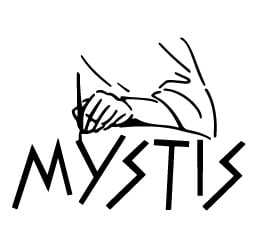
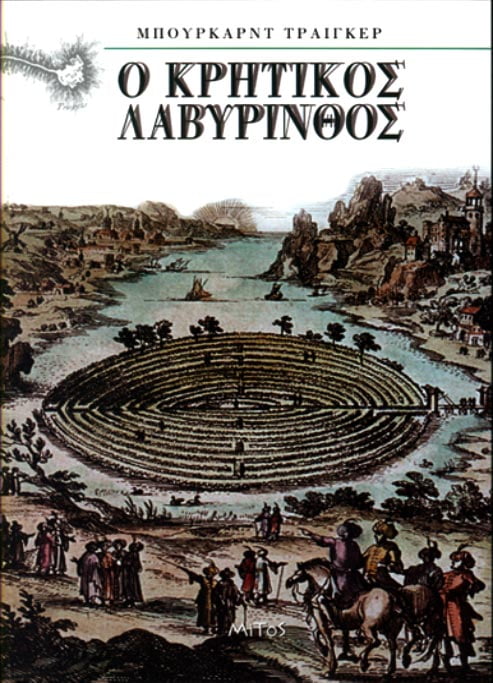
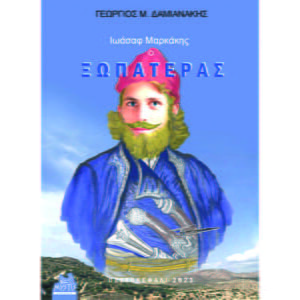
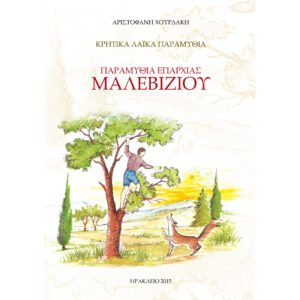
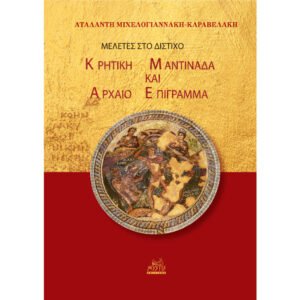
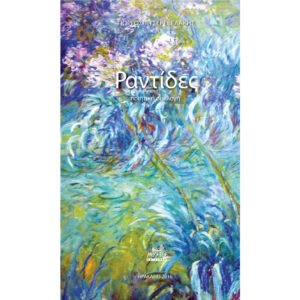
Αξιολογήσεις
Δεν υπάρχει καμία αξιολόγηση ακόμη.